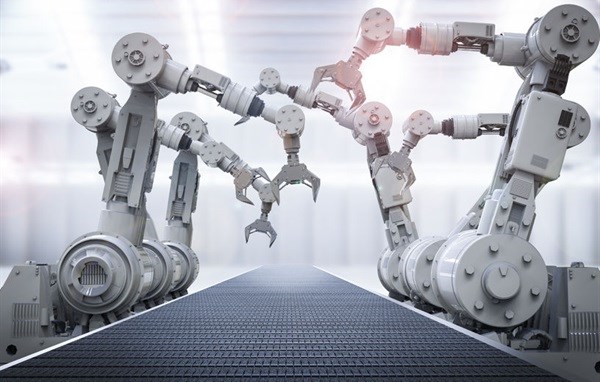
Top stories




HealthcareHIV funding still falls short of targets after pledges: what’s at stake
Melanie Bisnauth 2 hours



For manufacturing execs, digitalisation presents numerous opportunities, to enrich their processes with new data insights, to pool their human and their artificial intelligence (AI) resources, and to evolve their classic value chains into more collaborative and digitised networks of specialists.
With the right mix of strategy, culture and technology, manufacturing organisations can shift from their outdated legacy processes, towards more flexible and digitalised platforms, enhancing their competitiveness and positioning themselves for an unpredictable future.
In the smart factory vision, almost every piece of equipment and tooling is fitted with sensors that are continually piping information into a nerve-centre – producing the insights that inform resource allocation, warn of potential machine downtime, and quickly reveal any bottlenecks in the factory’s processes.
General Motors, for example, uses sensors to monitor humidity in the painting process, automatically shifting the work to another part of the plant if the levels breach a certain threshold. Another prime example is that of a gold mining house that boosted yield by 3.7% by understanding and reacting to fluctuations in oxygen levels during the leaching process.
Digitalisation collapses borders and time zones, compressing distance and bringing different parties closer to one another. With new collaboration tools, manufacturing execs can digitally connect designers, engineers, researchers and supply-chain partners, and integrate these new networks into the products being developed on the factory floor.
Suddenly, manufacturers can access a wider array of specialist resources from across the globe, creating platforms for enhanced collaboration, communication, and real-time decision-making.
The emergences of digital and 3D printing technologies are starting to change the way many production lines operate. With new advancements such as direct metal laser melting, for instance, it’s possible to create stronger components at reduced cost, reduced waste, and greater efficiency.
But manufacturing technology isn’t just about new ways of producing goods and materials. We’re starting to see sensors and data being used in interesting, innovative ways, even in the context of ‘traditional manufacturing’. For example, some aircraft manufacturers are using sensors on smart tools to help workers drill holes with perfect precision. Tools detect the exact torque required to tighten bolts correctly, for instance, among other tasks. All of this helps to elevate manufacturing excellence to new heights.
While we certainly can’t predict the future direction of the manufacturing industry, one thing we can be sure of is that digital will play an essential role. By starting to adopt greater levels of digitisation in the factory, manufacturers position themselves to capitalise on emerging trends for the coming decade: the likes of rapid prototyping, crowdsourcing, augmented reality, increased robotics and artificial intelligence, and image-recognising cameras.
Traditional manufacturing business models are coming under increasing threat, and the pressure to digitise is intensifying. Today’s leading manufacturers are taking bold steps to reshape their operations, remove the processes hindering transformation, and change their company cultures.
For these fast-moving manufacturers, able to access the technology and the skills that they need, digital is creating exciting new opportunities in the production and distribution of goods.